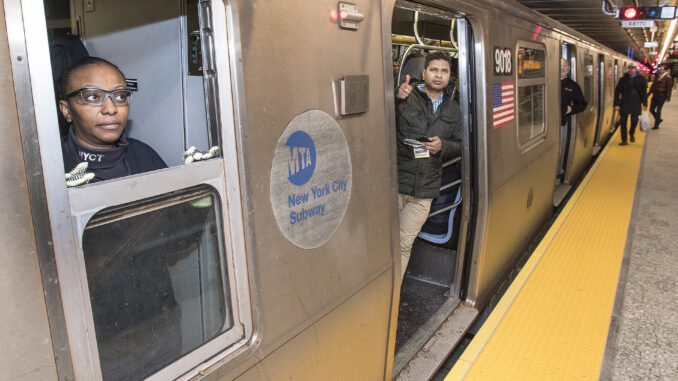
(The Center Square) — New York’s largest public transit system is cracking down on fare evaders, who cost the state nearly $700 million in lost revenue last year.
The Metropolitan Transportation Authority has rolled out a new plan to tackle fare evasion by modernizing subway fare gates and deploying “precision policing” and civil enforcement. It also has reduced costs for low-income transit riders, which the agency says is meant to “turn fare evaders, whenever possible, into paying customers.”
“Fare evasion is more than just a budget issue, it’s a social issue that tears at the spirit of fairness and mutual respect that New Yorkers need and expect,” MTA Chairman and CEO Janno Lieber said in a statement.
The agency is also using artificial intelligence tools to figure out how people are getting through without paying. Data compiled by the MTA shows about 50% of the fare evaders are walking through unsecured emergency exit gates, while another 20% are jumping over, going under, or squeezing through gaps in the turnstiles.
A state commission that looked at the issue found the MTA lost $500 million to fare evaders in 2021 and another $690 million last year, a 38% increase. Fare evaders on buses accounted for $315 million while $285 million was lost on the subway system, according to the panel.
The transit agency faces a potential $2.6 billion budget deficit in 2025 and is seeking more state funding to help reduce its projected shortfalls.
In an op-ed published by New York newspapers, the MTA’s New York City Transit president Richard Davey said the agency is employing a number of approaches to crack down on people who don’t buy tickets. He said the strategy is called the “Four Es”: Education, Equity, Environment (as in design and technology) and Enforcement.
The response will include redeploying “gate guards” at “select” MTA stations to watch for fare evaders, he said. The agency is also replacing deficient hardware on turnstiles and securing emergency gates to prevent people from using them to skip out on paying fares, he said.
“We know that fair evasion is often a crime of opportunity,” Davey wrote. “People see someone holding the emergency gate open and walk through it rather than swipe or tap in creating what we call a super highway of fare evasion.”
But Davey said the agency is also looking to expand discounts for low-income riders, saying the priority is “making sure that fair evasion is never a crime of poverty.”
He said the impact of people jumping turnstiles goes far beyond the financial hit to the transit agency’s primary source of operating funds.
“Fare evasion is not just a serious financial threat to the MTA, it undermines the transit system’s role as New York’s public square – we are people for opinions about whether this city is functioning as it should,” he wrote. “Turning the tide won’t be easy, but we can’t afford not to act.”
— Christian Wade, The Center Square contributor




